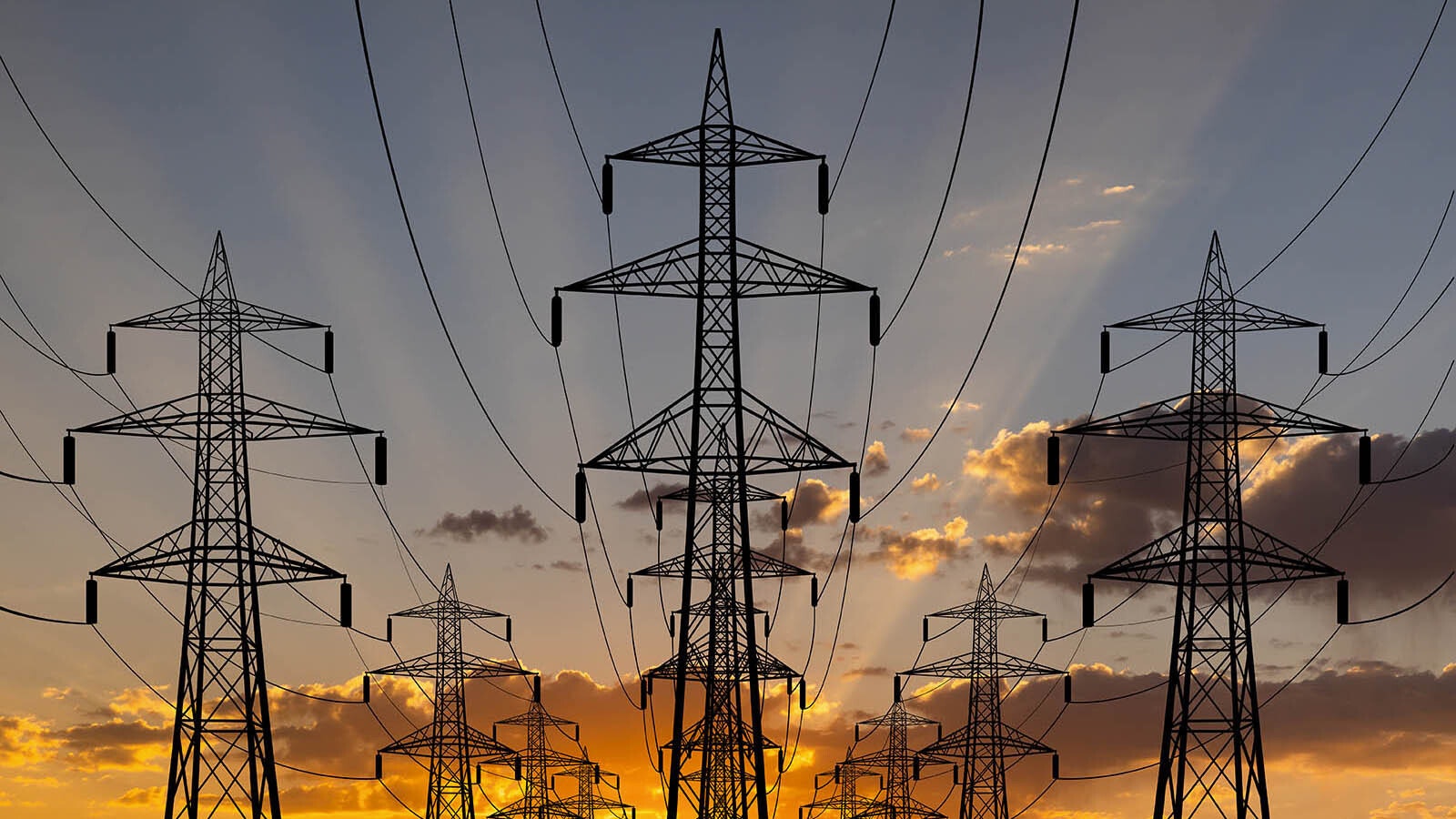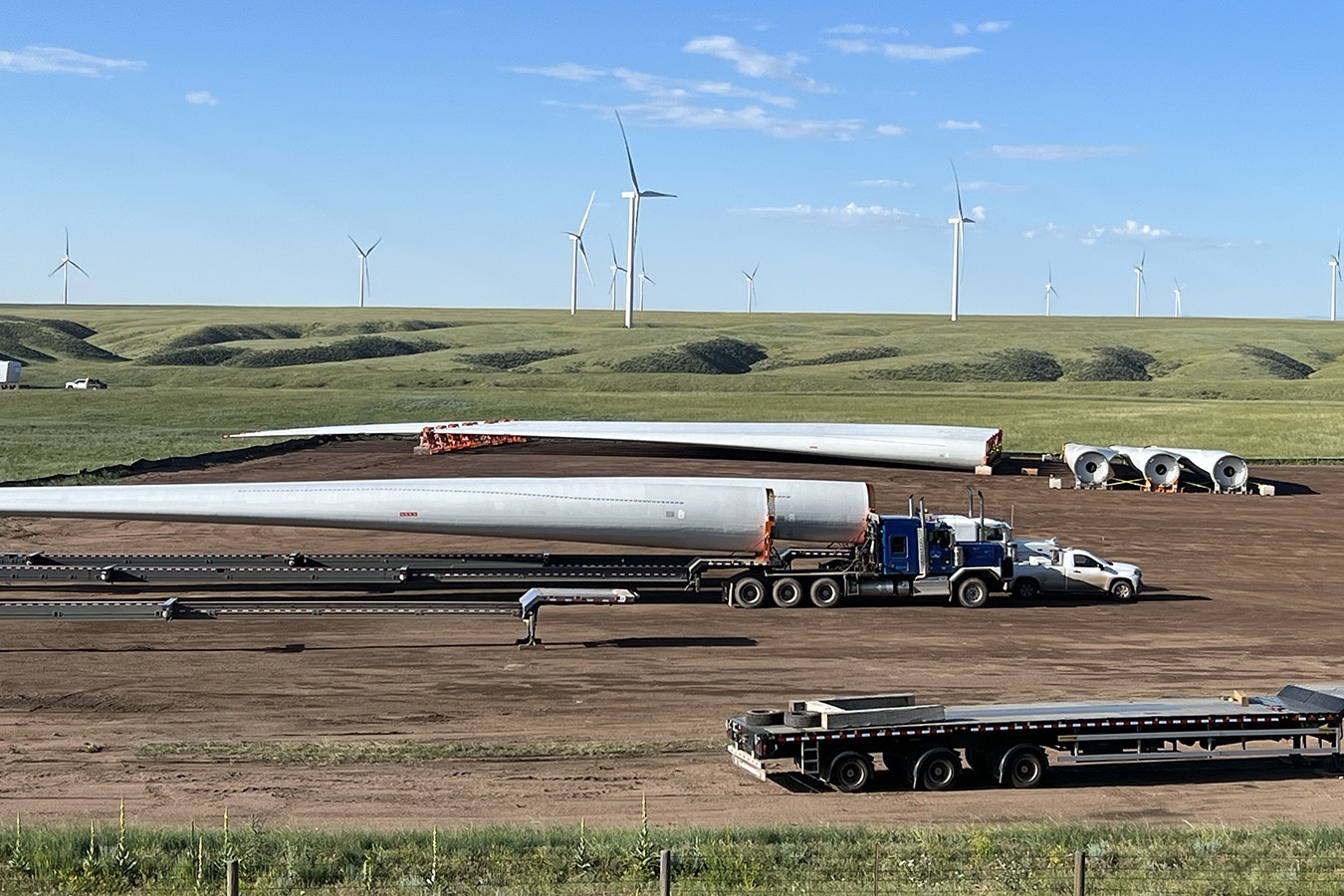Wyoming produces a lot of energy for other states and needs more transmission lines to keep up with the demand to connect a growing number of Cowboy State wind and solar farms to consumers.
These high-voltage lines almost always cross some federal land, meaning the projects have to go through the federal permitting process.
The average environmental impact statements that are part of the National Environmental Policy Act and required for these projects take an average of 4.5 years and are several hundred pages long. And that is just one part of the permitting process.
Permitting also can be dragged out longer with lawsuits and complaints over inadequate agency reviews.
This was the central argument made in a lawsuit filed last month by the Powder River Basin Resource Council and the Western Watersheds Project that’s holding up a 5,000-well oil and gas project in Converse County.
Major Exporter
The Cowboy State produces 13 times more energy than it consumes, according to the U.S. Energy Information Administration, which makes it the second-largest net supplier of domestic energy after Texas.
About 15 years ago, Wyoming wind companies began planning to increase their transmission capacity in anticipation of planned wind projects. Because of that foresight, the permitting process for those transmission lines has kept pace with the need for transmission capacity as the wind farms came online.
“We’ve been engaged in expanding our transmission system steadily since 2007,” said David Eskelsen, spokesperson for Rocky Mountain Power.
In that year, the company announced its Energy Gateway Transmission Project, which consists of 2,000 miles of new transmission lines across Wyoming, Utah, Idaho, Oregon and a sliver of Colorado. According to the company’s Integrated Resource Plan, five of the project’s major segments — nearly 600 miles of transmission — are complete and operating.
About 25% of the completed miles of transmission are in Wyoming. Another 700 miles are in the permitting process and expected to come online over the next several years.
With a lot of wind and solar projects, as well as storage systems to deal with the intermittency of those types of generation, the company incorporporated the long permitting process into its planning.
“We knew we needed to expand the transport system in a major way,” Eskelsen said, adding it continues to plan for future capacity in the same way.
TransWest Express
The 732-mile TransWest Express transmission project will serve the Chokecherry-Sierra Madre wind farm south of Rawlins, which will have 600 turbines once it’s complete. That transmission line will run from Wyoming to Nevada. The TransWest company developing the project began the earliest stages of the environmental impact statement as part of the NEPA process in January 2011.
It’s currently waiting on the Bureau of Land Management to grant the company a Notice to Proceed, the last step before construction can begin.
EE News reports the project needed to obtain approvals from not only 14 individual field offices of the BLM, but also the Bureau of Reclamation and U.S. Forest Service. The company expects to receive a notice to proceed early next year and construction will be complete in 2026.
Permitting Reform Fails
The Inflation Reduction Act that was passed in August contains roughly $400 billion for low-carbon energy projects like wind and solar.
While Wyoming was fortunate to have a lot of transmission in the works for its wind and solar farms a decade ago, these IRA-funded projects are running now facing years of permitting work.
The American Clean Power Association estimates that the IRA will result in 525 to 550 gigawatts of utility-scale clean power by 2030.
U.S. Sen. Joe Manchin, D-West Virginia, pursued a permitting reform bill that would have imposed a two-year limit on NEPA reviews, require permits to be issued within 180 days after the review was complete and place a 150-day statute of limitations for lawsuits challenging projects.
Sens. Bernie Sanders, an Independent, and Elizabeth Warren, a Democrat, were among the most vocal opponents to Manchin’s bill, despite their insistence that climate change poses a national emergency that needs to be addressed with more wind and solar.
“Changes to the permitting process should strengthen — not steamroll — public participation,” the senators wrote in a letter to Senate Majority Leader Chuck Schumer, D–New York, which was signed by another six senators.
Another 70 House Democrats sent a letter to Speaker of the House Nancy Pelosi, D-Calif., opposing Manchin’s proposal over concerns about the bill.
“The proposed legislation would restrict public access to the courts to seek remedies against illegal project development; place arbitrary limits on the amount of time the public is given to comment on polluting projects; and curtail public input, environmental review, and government accountability,” the letter says.
Manchin’s bill ultimately failed.
Obama Also Tried
A decade ago, another attempt was made to expedite the permitting process, specifically for transmission.
EE News reports that in 2011, the Obama administration formed the Rapid Response Team for Transmission. It identified seven major transmission lines that needed to be expedited through the permitting process. Today, two of those projects have been finished, one was abandoned, another is partially complete and three others, including the Transwest Express project, are close to breaking ground.
An analysis by Princeton University estimates that the U.S. will need to double its rate of transmission development to fully realize the benefits of the IRA funding, and without that expansion about 80% of the potential emissions reductions will be lost.
Eskelsen said that the permitting process is an extremely time-consuming part of Rocky Mountain Power’s transmission projects, and “whatever can be done to improve and streamline the process is certainly something that we support.”
In the meantime, PacifiCorp is starting the planning process early, Eskelsen said, to “make sure we are ready with the resources that our customers are going to need.”





